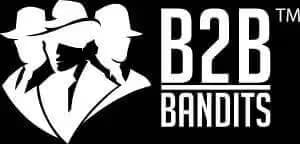“At the heart of all beauty lies something inhuman.”
– Albert Camus –

Do ‘economic ecosystems’ apply to small biz owners?
Or is it just a lofty topic better left to academics?
Is social media the bridge between communities that everyone says that it is?
I’ve been pondering a lot lately about how ecosystems might apply to the world inhabited by small biz owners. I hear the word community thrown around quite a bit among marketing geeks like me. Usually it’s applied to the bland go-local campaigns being heavily touted these days, or to such in-human, disconnected digital worlds such as Facebook.
So in my usual fashion I drove straight into the belly of the beast, and began gobbling up as much information as I could on ecosystems, community, symbiosis, etc…
Here’s my cursory results:
DISCLAIMER: I felt seriously out-gunned writing this piece – the majority of articles I read were academic papers written by some hella smart people. For a minute, I thought I had teleported into an episode of Numb3rs, with Charlie frenetically explaining probabilities, chaos theory and the various techniques to map complex systems. I’m quite certain that I’ve screwed up some of the facts, however, my goal here is simply to distill the topic into a from digestible for small business owners like me, in the hope that it may strengthen and humanize their businesses.
Ecosystems vs. Community vs. Relationships
A community is made up of living entities and is mostly chaotic and difficult to define. An ecosystem imposes some order on that mess and includes “non-human entities”.
Put simply an ecosystem contains interdependent communities.
The strength of an ecosystem, and the connections between its communities (and their members) is dictated by the following criteria:
- Diversity – in nature, the diversity of the elements in an ecosystem lead to more rapid evolution, which in the end leads to the survival of the species within it.
- Abundance – availability of resources, food, water, electricity, etc…
- Stability – the ability of the elements in the ecosystem to weather change.
- Parasitism – a non-mutual relationship. The parasite benefits at the expense of the host
- Competition – interaction between living things in which the fitness of one is lowered by the presence of another
- Symbiosis – loosely: separate organisms that live interdependently with one another, without competing
- Membership – 1) Thinkers – Produce ideas, 2) Makers – Execute ideas, 3) Traders – Get makers and thinkers in the same room
An ecosystem is a community of living organisms (plants, animals and microbes) in conjunction with the nonliving components of their environment (things like air, water and mineral soil), interacting as a system.
– Wikipedia –
Drilling it Down: Ecosystems and the Economy
When we look at ecosystems through an economic lens, some other factors are visible.

- A small biz owner already has community because they have clients and customers – but what ecosystem?
- Ecosystems are not bound by geographic limitations, though its resident communities may be.
- Geographical constraints are a real thing, even in the digital age.
- When bridges are built in ecosystems to connect disparate community, the bridge can be “in-human” but you still must have a human on each side of that bridge.
- Social Media is NOT an Ecosystem or a Community. It is a man-made bridge to connect communities.
- Facebook is a decomposing bridge … there is no true exchange of value, not real connection.
- A Mega Digital City will exhibit the same problems as a Mega City in the physical sense.
Small Business Ecosystems: Winners and Losers
LOSER: Film (Non-Digital)
- Communities
- Film Developers
- Film Makers
- Film Enthusiasts
- Distributors
- Equipment Manufacturers
- Film-Savvy Crew
- Diversity – an elite crowd, with large barriers to entry regardless of community, and Hollywood is by nature incestuous.
- Abundance – Entertainment that requires traditional film is constantly shrinking in size. With Kodak going out of business, the supply of its core resource is shrinking as quickly as the public’s demand.
- Stability – with digital technology evolving at a breakneck pace, the stability of the non-digital film crowd actually represents its greatest weakness.
- Parasitism – this ecosystem has some parasitism … its lack of diversity is the greater sin.
- Competition – the only way to remain competitive in this ecosystem is mergers and acquisitions, which merely re-arranges stale resources – instead of injecting new resources back into the communities.
- Symbiosis – this is the only thing that this ecosystem does well … the volume of micro-communities that support the ecosystem are numerous, from camera loaders, to color correction pro’s, to developers, to lighting savvy gaffers.
- Membership – plenty of makers, thinkers and traders. However, the over-growth of un-digested resources makes this a moot point.
- What can make it better? This is a tough one. Increasing collaboration between digital and non-digital communities is already starting to happen. It just needs to happen faster. Also, ejecting non-innovators out of the communities will help too.
WINNER: the Open Source Movement
- Communities
- Developers
- Project Managers
- Techie Entrepreneurs
- Conference Organizers
- Writers / Journalists
- Designers
- Hardware Manufacturers
- Technicians
- Diversity – crosses language, geographic, cultural, currency and industry boundaries.
- Abundance – there’s plenty to go around, when all you need is internet access, a bit of electricity and a laptop. Digital currency platforms from Paypal, to open source currencies like BitCoin, help with this as well.
- Stability – the open source movement is designed to change and evolve by its very nature
- Parasitism – corporations and individuals what attempt to ‘leech’ off of the Open Source Movement will be summarily ejected and banned from returning.
- Competition – a programmer’s merit is based solely on the functionality and usability of their work. Better quality is rewarded, breeding healthy competition.
- Symbiosis – network engineers, for example, are stratified roughly using a system of layers dubbed the OSI Model. Each layer consists of a variety (translated: diversity) of protocols. An application developer cannot exist without experts in data infrastructure. The the data infrastructure is useless without applications riding on top of it.
- Membership – chock-full of thinkers and makers. Traders are in short supply.
- What can make it better? There are plenty of thinkers and makers, but not many traders. Getting the different communities in the same room is challenging outside of a smattering of conferences. Waiting a year to engage in real-time, human trade is too a year too long.
AND MY ECOSYSTEM: Private / Small B2B Companies
- Communities
- Owners
- Startups
- Bankers
- Techies
- Support
- Makers of all Types
- Diversity – plenty of diversity due to the endless combinations of services and products that feed the small B2B-focused companies out there.
- Abundance – this is a problem … it’s so easy to start a business these days, that there are too many bloated communities in the ecosystem – it is NOT sustainable in its current size and configuration.
- Stability – a huge chunk of small companies rely on one or two Big Companies whose fate is controlled by highly erratic market fluctuations worldwide. A CEO getting cancer can sink 100’s of companies that support him/her.
- Parasitism – another glaring issues in this ecosystem (tied to the abundance issue) … I’d make the jump, and declare that parasitism has devolved into cannibalism.
- Competition – see “Stability”
- Symbiosis – certain cluster of communities have great symbiosis. Accounting software creators and small business owners rely on each other in a healthy way. One cannot survive without the other, and they do not compete.
- Membership – plenty of thinkers and traders, however, there’s too many communities who rely solely on selling their thinking as a service. At the end of the day, businesses eventually support a consumer, however indirectly the connection.
- What can make it better? Make smaller communities. Kick out the parasites, and make it more difficult to allow new members into the communities. Strengthen relationships between makers and traders, to offset the overage of thinkers.
Some Questions
- What community do you belong to?
- What ecosystem does that community belong to?
- Which community benefits the most in your ecosystem? The least?
- Can your ecosystem support all of its communities? If no, then why not?
- Can your community support all of its members?
- What is one specific action that you can take this month to strengthen your community?
- And will that action also strengthen the whole ecosystem?
Applying the Ecosystem Concept to Your Small Biz
- Start with your neighbors (geographic or not)
- Promote independence – like state sovereignty (anti-membership / anti-club)
- Define your boundaries … boundaries are good thing (barriers to entry / compeititon, forces a tighter, stronger niches, higher quality relationships, etc…)
- Ecosystems survive because they evolve. Diversity and its inevitable collaboration translates well into teaching. By teaching others in your ecosystem, you strengthen its communities.
- Bigger is not Better … it’s easier to define the boundaries, easier to collaborate, easier to evolve, and easier to strengthen when working with smaller groups.
- Communities are supposed to be messy … learn when to get out of the way.
- Learn to spot and identify disturbances.
BOTTOM LINE
Communities are naturally formed, and ecosystems can be manipulated. Ultimately the reasons for this are simple, HAPPINESS in the form of safety, comfort, and pleasure.
Honestly, I didn’t find the answer I was looking for, but I did uncover some important questions:
- What is your ecological niche?
- What bridges do you use? Which humans stand on either side of them?
- Who are the keystones in your community?
REFERENCES
Business ecosystem as the new approach to complex adaptive business environments







